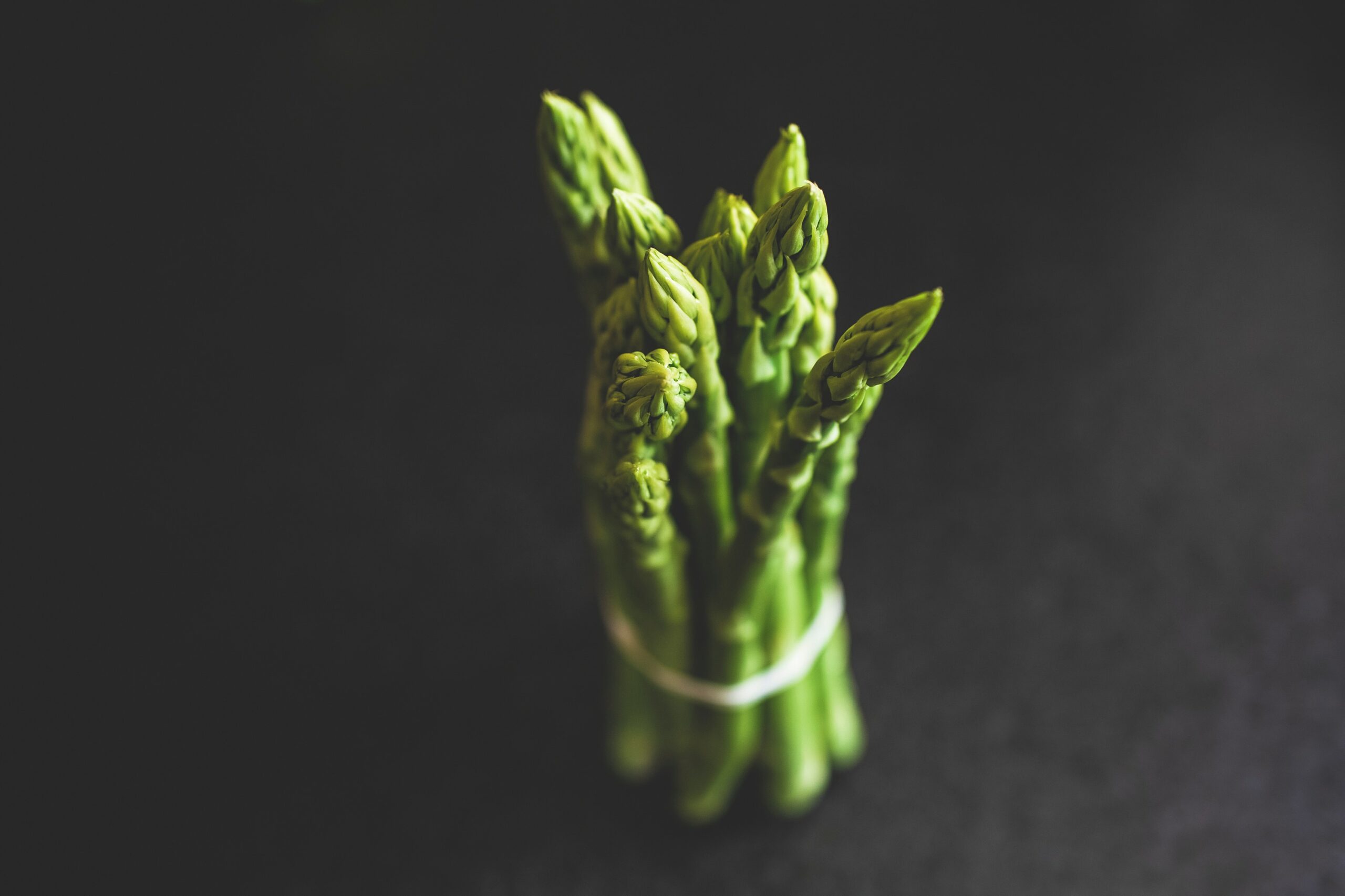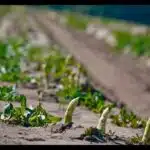There is a theory that dates back to the days of ancient Greece and Rome; it suggests that asparagus has medicinal properties. While this theory has yet to be proven, one thing remains true – asparagus is an incredibly delicious vegetable! Fortunately, anyone can learn how to plant, grow, and harvest their own asparagus at home.
Growing your own asparagus is not only a rewarding experience, but it also provides you with an endless supply of fresh vegetables right in your own backyard. With the right preparation and knowledge, you can easily plant and grow asparagus with ease.
Once planted and grown, harvesting your asparagus will provide you with a continuous supply of fresh vegetables every year. In this article, we’ll explore exactly how to go about planting, growing, and harvesting your own delicious and nutritious asparagus from home. Keep reading to learn all there is to know about planting, growing, and harvesting this delectable vegetable for yourself!
Select A Planting Site
Choosing the right planting site is crucial to growing a successful asparagus crop. When selecting a spot, look for an area that receives full sun and offers well-drained soil. Asparagus does best in nutrient-rich soil, so if your soil lacks fertility, then consider adding compost or aged manure before planting. It’s also important to make sure your site is big enough; asparagus can spread out and grow up to three feet wide.
Another factor to consider when picking a location is how long you plan on growing asparagus there. Once they are planted, asparagus plants can live for many years, so it’s important to choose a spot that you won’t need to move them from in the future. Additionally, avoid areas with standing water or poor drainage–soil should be moist but not soggy.
If you have the perfect spot chosen, it’s time to prepare the soil for planting. Before getting started, test your soil pH and adjust accordingly if needed. This will ensure that your plants get all the nutrients they need and help them thrive!
Prepare The Soil
When preparing the soil for planting asparagus, a few steps must be followed. Firstly, it’s important to select an area with full sun and well-drained soil. Secondly, clear the area of any weeds and debris, adding a 2-inch layer of compost over the top. Finally, loosen the soil to a depth of 12 inches and mix in an additional 2-3 inches of compost.
To ensure the best possible growth, here are three tips:
- Test the soil before planting to identify any nutrient deficiencies or pH imbalances that need to be addressed.
- Add aged manure or another organic fertilizer to enrich and nourish your asparagus plants.
- Amend clay soils by incorporating organic matter such as peat moss or compost. With these steps taken care of, your garden is ready for planting! By providing ample sunlight exposure and healthy soil conditions you can help your asparagus thrive year after year. All that’s left is to get those crowns in the ground – but more on that later!
Plant Asparagus Crowns
Life is full of coincidences, and this section is no exception. Just when you thought the preparation process was over, it’s time to plant your asparagus crowns! Planting asparagus takes a bit of planning and patience, but the results are worth it.
When planting your asparagus crowns, it’s important to select healthy ones that have not been frozen or stored for too long. Choose crowns that are grayish-green in color and firm to the touch. You’ll also want to pick out crowns with an open center so that they can spread freely in the soil. After selecting your crowns, it’s time to get them in the ground!
Start by digging a trench about 6 inches deep and 18 inches wide. Space each plant 12 inches apart from one another, then place them in the trench with the roots facing down and at least 2 inches of soil covering them up. Once planted, you should see shoots starting to come up within a few weeks; however, don’t be tempted to harvest anything during the first year after planting. The plants will need all season to become established before they produce any edible shoots.
As you wait for your asparagus plants to mature, keep in mind that they need ample amounts of water if you want them to thrive. Establishing a fertilization program will help ensure that your plants get all the nutrients they need throughout their growing season.
Establish A Fertilization Program
Fertilizing is an essential part of the planting and growing process for asparagus. After all, this vegetable requires a lot of nutrients to grow and flourish. However, it’s important to be careful not to overfertilize your plants. Establishing a fertilization program will help ensure that you get the best results from your asparagus crop.
The first step in setting up a fertilization program is to choose the right fertilizer for your specific type of soil. Different types of soils require different combinations of nitrogen, phosphorus, and potassium (NPK). A good rule of thumb is to use a 10-10-10 or 20-20-20 fertilizer because these NPK ratios are ideal for most asparagus crops.
Once you’ve chosen the right fertilizer, it’s time to decide how often you should apply it. Asparagus plants require regular doses of fertilizer throughout the growing season – usually every two weeks during spring and summer months, and then again in late fall before the ground freezes. Make sure you read the instructions on your product carefully so that you know how much fertilizer to use each time you apply it. Following these simple steps will give your asparagus plants exactly what they need for healthy growth and production!
Keep Asparagus Plants Watered
While growing asparagus can be a rewarding experience, it requires careful watering and mulching. After you’ve prepared the bed and planted your asparagus crowns, the next step is keeping your plants watered. Without adequate moisture, asparagus will not grow well and may die during hot weather. To ensure your asparagus stays healthy, you must make sure that the soil remains moist at all times.
The frequency of watering will depend on the climate in your area and how much rainfall you get. In dry climates or during warm weather, you may need to water every few days or even daily to keep the soil from drying out completely. When watering, try not to wet the leaves of your plants; instead, focus on getting water down into the soil around the roots. This can be accomplished with a gentle trickle in each row for several minutes or by setting up a drip irrigation system if you have one available.
Once established, mulching is also important for keeping your asparagus well-watered and free from weeds. The mulch helps retain moisture in the soil so that it doesn’t evaporate due to sunlight or windy days. It also prevents weed growth by blocking light from reaching their seeds while they are germinating. For best results, apply a layer of organic mulch around each plant after watering it deeply but before any new growth appears in springtime. With proper watering and mulching practices in place, you’ll be able to enjoy fresh homegrown asparagus for years to come!
Mulch The Asparagus Bed
Once your asparagus bed is all prepped and planted, it’s time to add some mulch. Mulching is a great way to keep weeds down, retain moisture in the soil, and even add nutrients to your plants. Plus, it looks really nice! So how exactly do you go about mulching an asparagus bed?
First off, you’ll need to choose the right type of mulch for your asparagus bed. Organic material such as straw or hay works well since it helps keep the soil moist and provides nutrients. You’ll want to spread a 2-3 inch layer of mulch all around the bed, making sure that none of the asparagus plants are covered by the material. If you’re using organic matter like straw or hay, be sure to reapply every season or so when it starts getting thin.
Finally, keep an eye on your asparagus bed throughout the year and make sure that the mulch hasn’t shifted away from its original placement. This will help ensure that your plants stay healthy and well-maintained during their growing season! With regular maintenance and proper care, you’ll be able to enjoy delicious homegrown asparagus for years to come. Looking after your asparagus is easy – just remember to keep it weeded!
Keep Asparagus Weeded
Weeding an asparagus bed is essential for ensuring a high-quality harvest. By regularly removing weeds, you can make sure that the asparagus plants have access to all the nutrients and moisture they require. Plus, you won’t have to worry about competing vegetation stealing away those resources from your prized vegetable crop! It’s not difficult to keep an asparagus patch weeded; simply use a garden hoe or trowel to gently remove any weeds you find growing near the plants.
When weeding an asparagus bed, it’s important to be sure you don’t damage the roots of the young plants. Be gentle with your tools and take care not to dig too deeply when removing weeds by hand. You may even want to consider using a weed mat or some other form of barrier in order to make sure that only the desired plants are able to grow in your garden space.
It’s also important to remember that, while keeping your asparagus bed weeded is important, it’s just one step towards ensuring a successful harvest season. To maximize your yield, it’s essential that you also monitor pests and diseases on a regular basis and take action quickly if any issues are identified. Keeping up with these tasks will help ensure that your asparagus is healthy and delicious every year!
Monitor Pests And Diseases
Monitoring pests and diseases is a critical part of growing asparagus in your home garden. It’s like a chess game: you have to outsmart the potential problems before they arise. To make sure your asparagus bed remains healthy, there are four key steps you can take:
First, be on the lookout for signs of disease or pests. Look closely at the leaves and shoots for any discoloration or wilting – these can indicate a problem. Also inspect the soil around your plants; if it has been disturbed, that could mean an animal has been digging around your asparagus patch.
Second, practice good hygiene in the garden. Keep weeds out of your asparagus bed so they don’t compete with your plants for nutrients and water. Additionally, remove any dead leaves or stems from around the bed to prevent disease from spreading to other plants.
Third, use natural pest control methods whenever possible. As tempting as it may be to reach for chemical pesticides, sometimes natural solutions like beneficial insects or companion planting can be just as effective without introducing toxins into your garden.
Finally, take action quickly if you do spot a problem. If you notice something off with one of your plants, investigate further and act swiftly; this will help prevent any damage from becoming too severe and save you time in the long run. Don’t let pests or diseases get the better of you; stay vigilant and keep a close eye on your asparagus bed! With some patience and diligence, you’ll soon reap a bountiful harvest of fresh delicious spears!
Harvest Asparagus
Harvesting asparagus is an exciting and rewarding experience for home gardeners. After spending months caring for the plants, you can finally reap the benefits of your hard work! But before you can enjoy these delicious spears, there are a few key steps you’ll need to take:
First, determine when it’s time to begin harvesting. Asparagus is typically ready for picking in late April or early May after three years of growth. The spears should be thick and at least 6 inches long before harvesting them. If they’re thinner than that, let them grow a bit longer. Once you’ve determined that your asparagus is ready, here’s what to do next:
• Check your asparagus bed daily and harvest the spears as soon as they reach the ideal size. • Cut the spears off near ground level with a sharp knife or scissors. Make sure not to damage any nearby shoots while cutting. • Gently wash off any dirt or debris on the spears before eating or storing them. • Keep up with harvesting until all of the spears have been cut—usually about two weeks’ worth of picking—so that none go to waste. • Store your freshly-harvested asparagus in the fridge for up to two weeks or freeze it for later use if desired.
With patience and dedication, you can easily grow healthy, delicious asparagus at home! By following these simple steps and keeping an eye out for pests and diseases, you can ensure that your harvest will be successful year after year. Now that you know how to harvest your asparagus crop, it’s time to consider dividing and transplanting overgrown beds so that they can continue producing tasty spears each spring!
Divide And Transplant Overgrown Asparagus Beds
It’s time to celebrate! After months of careful attention, your asparagus bed is ready for a new phase. You’ve spent a lot of love and effort making sure your plants were well-tended, and now you’re ready to reap the rewards. The 10th step in the journey of planting, growing, and harvesting asparagus at home is to divide and transplant overgrown asparagus beds.
This process is an exciting one because it’s when you get to really enjoy the fruits of your labor. Overgrown beds can be divided into smaller portions – each with its own little asparagus patch – so that more people can benefit from the harvest. This way, everyone in the family can enjoy their very own fresh asparagus meal! Not only that, but by dividing up the bed into smaller sections it allows for better air circulation and more room for the roots to spread out, which helps promote healthy growth.
By taking this step, you’re ensuring that everyone has access to nutritious meals made with homegrown produce. What could be better than that? Now all you have to do is sit back and watch nature take its course! As long as you continue to provide proper care and maintenance for your plants, there will be plenty of delicious harvests ahead. With a little bit of patience and dedication, you’ll soon have enough tasty homegrown asparagus to share with friends and family.
You’ve done so much already – now it’s time to identify male and female asparagus plants so that they can reach their full potential in your garden.
Identify Male And Female Asparagus Plants
As the saying goes, knowledge is power. In order to make the most of your asparagus harvest, it is important to identify male and female plants. In this step, you will be able to tell the difference between male and female plants by looking at their physical characteristics.
Male asparagus plants are typically taller than female plants, with larger stalks and more branches on the stalk. They also produce flowers that are a lot bigger than those of the female plant. On the other hand, female asparagus plants usually have smaller stalks with fewer branches on them. Their flowers are much smaller than those of the male plant.
In addition to these physical differences, there are also some key differences in how they grow and produce asparagus spears. Male plants can produce up to ten times more spears per season than female plants do, making them a better choice for harvesting large quantities of asparagus for preserving or canning purposes. By being able to identify which type of plant you have in your garden, you will be able to maximize your harvest and get the most out of your asparagus growing experience!
With this knowledge in mind, you can look forward to preserving your delicious asparagus harvest for months after it’s been harvested!
Preserve Asparagus Harvest
Preserving your asparagus harvest is like a dream come true! With the right technique and some patience, you can ensure that your hard-earned harvest will last until the next season. Here’s how to get started.
Firstly, as soon as you’ve harvested your asparagus, it’s important to prepare it for storage. The best way to store fresh asparagus is to blanch it in boiling water for 2-3 minutes before cooling it quickly in a bowl of ice water. This process helps preserve its bright green color and sweet taste. Once cooled, cut off the woody ends and use a paper towel or kitchen cloth to remove excess moisture. Finally, wrap the stalks in plastic wrap or wax paper and store them in a sealed container in the refrigerator for up to one week.
Another preservation option is to freeze your asparagus harvest. Before freezing, blanch the spears in boiling water and shock them with cold water afterwards just like before. Then lay them out on a baking tray so they don’t touch each other and place them in the freezer until solid – this should take about an hour. Once frozen, transfer your spears into freezer bags or other containers with lids and store them for up to 8 months!
With these simple steps, you can enjoy delicious asparagus year-round without having to worry about losing any of your hard-earned harvest! Now all that’s left is to replant your perennial vegetable…
Replant Asparagus After Harvest
Coincidentally, it’s time to replant after your asparagus harvest! When it’s time to replant asparagus, the first step is to choose a new location for the plants. You’ll want to pick an area with well-drained soil and full sun exposure. If you can provide extra protection from wind and cold temperatures, even better!
Next, it’s time to prepare the soil. Loosen the soil 6–8 inches deep in a wide row or circle. Incorporate 1–2 pounds of 10-10-10 fertilizer per 100 square feet into the soil. Rake the soil so that it is level and free of clumps, then form shallow trenches in which you will plant your asparagus crowns (the part of the plant where root meets stem).
Finally, planting season has arrived! Place two to four year-old asparagus crowns 18–24 inches apart in each trench. Spread out their roots and cover them with 2 inches of soil. Water deeply after planting and continue watering once a week during dry spells throughout the growing season. Ready for more? Let’s move on to troubleshooting common problems when planting, growing, and harvesting asparagus at home!
Troubleshoot Common Problems
No matter how much work and effort you put into growing asparagus in your home garden, there may still come a time when things don’t go according to plan. Just like any other vegetables, asparagus is vulnerable to common problems that can potentially ruin your harvest. Troubleshooting these issues and taking steps to avoid them will help you enjoy a successful harvest of asparagus.
When it comes to troubleshooting common problems with your asparagus crop, there are several factors to consider: • Use of Pesticides • Irrigation and Soil Moisture • Plant Diseases
Using pesticides on the asparagus plants is important for keeping away pests that could damage the crop. If you choose to use pesticides, be sure to read the instructions carefully and follow them closely. Additionally, make sure the soil remains moist throughout the growing season so that the plants have enough water for optimal growth. Finally, watch out for signs of disease such as yellowing or wilting leaves which may indicate an infestation of fungi or bacteria that could kill the entire crop if left untreated.
Apart from using pesticides and monitoring soil moisture levels, there are some other measures you can take to prevent common problems with your asparagus crop. For example, rotate crops every year so that different types of plants aren’t competing for nutrients in one particular area. Additionally, keep an eye out for weeds that can compete with the asparagus plants for light and water and remove them promptly before they become a problem. Taking these precautions will help ensure you get maximum yield from your asparagus harvest this season!
With these tips in mind, you should now be better equipped to tackle any potential issues which might arise while growing your own asparagus at home. By paying close attention to all aspects of planting, growing and harvesting your own crop of delicious spears, you’ll soon be able to enjoy their fresh flavor straight from the garden!
Enjoy The Asparagus Harvest
Savoring the fruits of labor is a sweet reward after hard work. Planting, growing, and harvesting asparagus at home can be an incredibly rewarding experience – one that yields delicious rewards. As we finish this journey, it’s time to enjoy our harvest!
The final step in the process of planting and growing asparagus at home is reaping the benefits of all your hard work. Depending on where you live, asparagus season can start anywhere from late spring to early summer. If you have done everything right – planted in fertile soil, gave adequate water and sunlight – then it’s time to reap the bounty! When harvesting asparagus, look for spears that are 6-8 inches tall with a diameter of about half an inch or more. Cut them off at ground level with a sharp knife or snip with scissors.
Asparagus should taste sweet and tender when cooked properly; if it tastes bitter or fibrous then you’ve harvested too late. Enjoy your freshly harvested asparagus however you like – steamed, boiled, grilled, roasted – the possibilities are endless! With a little bit of patience and dedication throughout the growing process, you can now enjoy your own homegrown asparagus for months to come!
Frequently Asked Questions
How Long Does It Take For Asparagus To Reach Maturity?
Growing asparagus at home is no joke! It takes an immense amount of patience and dedication to get just the right results. But when you do, it’s like a breath of fresh air! You can experience the sweet taste of success when you finally have your very own asparagus harvest.
So how long does it take for asparagus to reach maturity? For the best results, preparing the bed and planting should be done in spring. This could be anywhere from late March to early May depending on your location. Then, you will need to wait two years before harvesting any spears. That’s right – two whole years! And even after that, it will take up to three more years for a full-fledged asparagus patch to develop.
But don’t let that dissuade you; with the right amount of care and attention, you’ll be able to reap the rewards of your labour: •tCaring for Asparagus: Watering regularly and mulching in hot weather will help keep your crop healthy and happy. •tFertilizing: To boost growth, add some fertilizer every 2-3 weeks during the growing season. •tHarvesting: Once your plants are mature, you can start harvesting spears from mid-spring until late summer or early fall.
Growing asparagus at home is a laborious yet rewarding experience that requires lots of love and dedication – but trust us, it’s worth it! With plenty of patience plus these tips in hand, soon enough you’ll be relishing in a delicious bounty that only you can call yours.
Should I Use Organic Fertilizer For My Asparagus Plants?
Growing asparagus at home is a rewarding experience that requires patience and dedication. For example, if you are planting your own asparagus bed, you may be wondering if you should use organic fertilizer for your plants. After all, the health of your crop depends on the nutrients it receives!
Organic fertilizer is an excellent choice for any asparagus bed. Not only does it provide essential nutrients to help the plants grow, but it also helps promote soil fertility and improve drainage. Organic fertilizers are generally made up of natural materials such as animal manure, fish meal, composted plant material, or seaweed extract. These materials can provide long-term benefits to your soil and will help ensure healthy growth of your plants over time. Additionally, organic fertilizers are typically more environmentally friendly than synthetic ones.
When using organic fertilizer for your asparagus beds, it’s important to keep in mind that too much can be just as bad as too little. Over-fertilizing can cause nutrient imbalances that can lead to poor plant health or even death! To avoid this problem, make sure to follow the directions on the package carefully and adjust according to what works best for your particular climate and soil type.
Organic fertilizers offer a great way to nourish and protect your asparagus plants while also promoting sustainability in gardening practices – making them an ideal choice for anyone looking to get the most out of their home-grown crop. With correct application and proper maintenance, these natural products can help ensure success in growing a delicious harvest of homegrown asparagus in no time!
What Type Of Mulch Is Best For An Asparagus Bed?
Asparagus is a delicious vegetable that can be harvested in the spring, and with some patience, can be grown in most gardens. Allusions to its regal history, as it was once served to Roman emperors only adds to its mystique. But what type of mulch is best for an asparagus bed? It turns out there are several options for gardeners to consider and each has its own benefits.
Organic mulches, such as bark chips or wood shavings provide protection from weeds, help retain soil moisture and keep the ground temperature consistent. Inorganic mulches such as gravel, crushed stone or plastic sheeting can also provide similar protections but may need more maintenance from the gardener.
Finally, composted materials like grass clippings or straw make great natural fertilizers while adding nutrients and organic matter to the soil. Compost can also help regulate the temperature of the soil while keeping weeds at bay.
No matter which type of mulch you choose for your asparagus bed, each option offers unique benefits:
• Organic Mulches: ○ Weed Protection ○ Moisture Retention ○ Temperature Regulation
• Inorganic Mulches: ○ Weed Protection ○ Moisture Retention
• Composted Materials: ○ Natural Fertilizer ○ Nutrients & Organic Matter ○ Temperature Regulation
By choosing the right mulch for your asparagus bed you can ensure that your plants will have everything they need to thrive and give a bountiful harvest throughout the growing season.
What Is The Best Way To Identify Male And Female Asparagus Plants?
Identifying male and female asparagus plants is an important step in growing this perennial vegetable. It’s essential to know the sex of the plants so that you can harvest the most flavorful spears come harvest time! Fortunately, it’s not too difficult to identify male and female asparagus plants. All you need is some patience and a keen eye.
The first thing to look for when trying to determine the gender of an asparagus plant is its flowers. Male asparagus plants will produce small, cone-like flowers that are yellowish-green in color. Female asparagus plants will produce larger, feathery flowers that are a shade of red or purple. Keep in mind that male plants generally don’t flower until their third year of growth, while female plants usually begin flowering in their second year.
Another way to differentiate between male and female asparagus plants is by examining the foliage. Female plants tend to have broader leaves than males, and they also tend to be more upright than their male counterparts. Additionally, female plants tend to produce berries after flowering which can help you further distinguish them from males. Identifying these differences will allow you to determine which type of plant you’re dealing with, helping ensure that your asparagus bed yields delicious harvests for years to come!
What Type Of Pests Should I Look Out For When Growing Asparagus?
Gardening can be a rewarding experience, but it also requires care and attention to potential pest problems. Growing asparagus is no exception. When you’re growing this delicious vegetable, it’s important to know what kind of pests to look out for so you can prevent them from ruining your harvest.
Asparagus plants are especially vulnerable to certain types of beetles and mites. The most common type of beetle found on asparagus plants is the spotted asparagus beetle, which has an orange-red body with black spots. These beetles feed on the foliage of the plant and lay eggs in clusters along the stems. Mites, such as the two-spotted spider mite, are another common pest that feeds on the sap of the asparagus plant and causes discoloration on the foliage.
Fortunately, there are some steps you can take to protect your plants from these pests. Handpicking any adult beetles or mites off your plants is one option; for more severe infestations, insecticides may be necessary. Keeping weeds away from your asparagus bed can also help reduce the number of pests by providing fewer places for them to hide and breed. Lastly, keeping the area around your asparagus bed clean will help stop these pesky creatures from invading in the first place!
With a few simple precautions, you can ensure that your asparagus patch will stay healthy and free of unwanted visitors all season long – allowing you to reap a bountiful harvest come harvest time!
Conclusion
Asparagus is a delightful vegetable, packed with many vitamins and minerals. It’s an easy plant to grow in your backyard, and if done correctly, you can enjoy the benefits of home-grown asparagus for years to come. With the right information and preparation, anyone can learn how to plant, grow, and harvest asparagus at home.
Once planted, asparagus takes three years to fully mature and reach its peak growth. To ensure success in growing asparagus at home, it is important to use organic fertilizer and the right type of mulch for your bed. Additionally, it is also important to identify male and female plants in order to maximize yields. Lastly, be sure to inspect your plants regularly for any signs of disease or pests that may be detrimental to the health of your plants.
Overall, with proper care and maintenance as well as some patience on your part, you can start enjoying delicious homegrown asparagus for years! As a bonus, you’ll also get to savor the satisfaction of having grown them yourself! So why not give it a try?





























